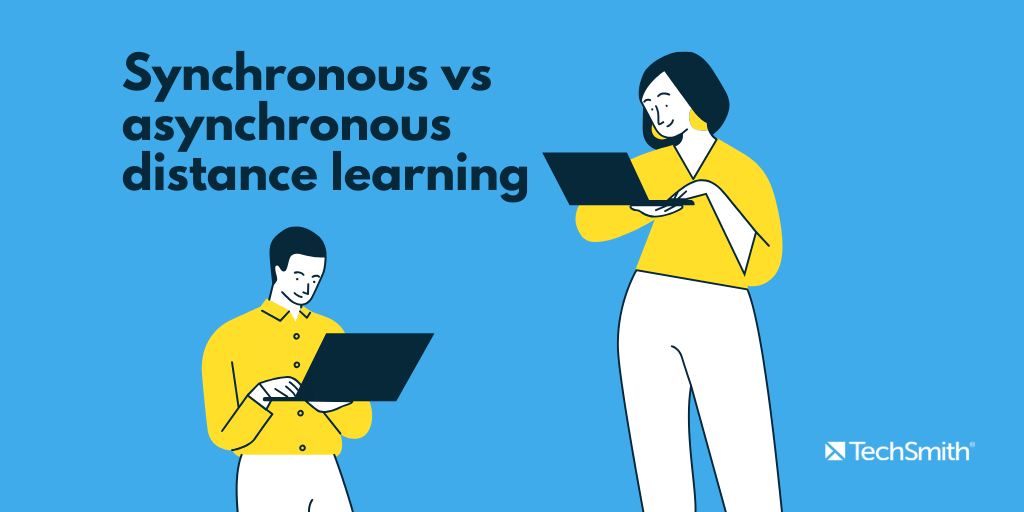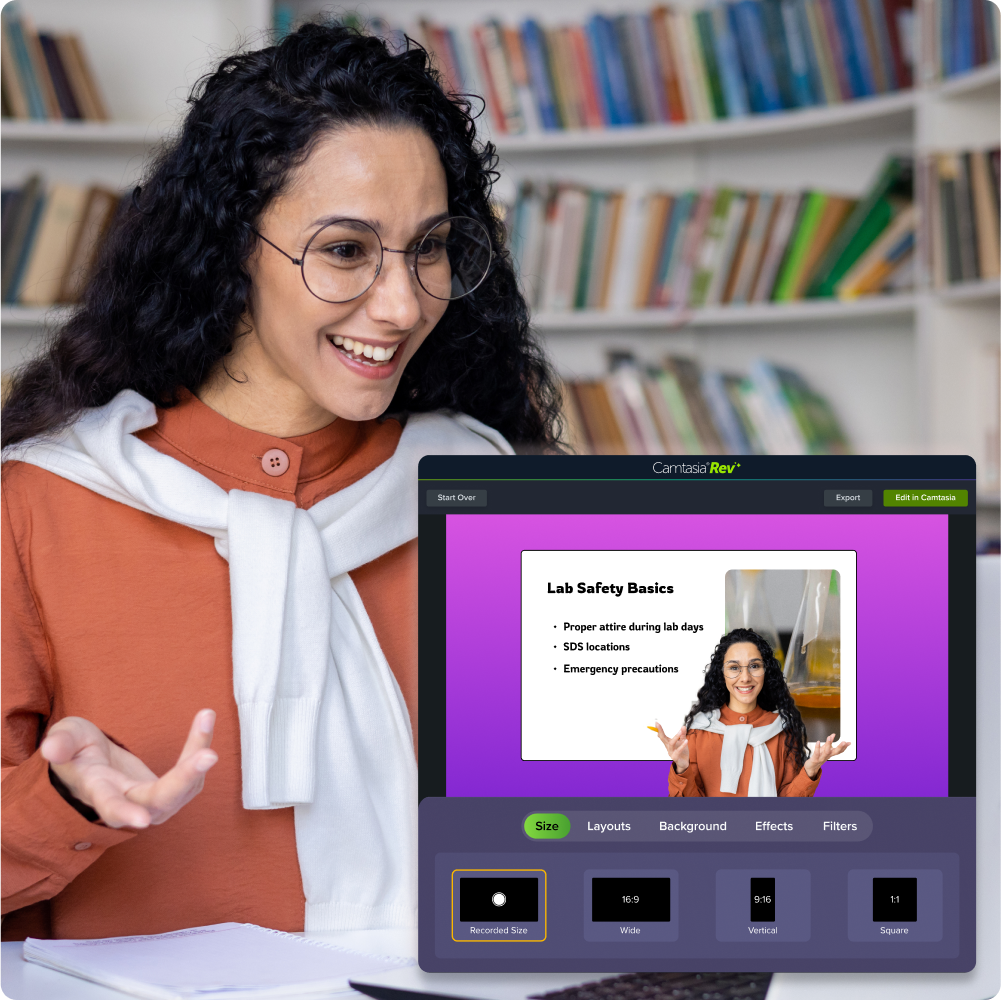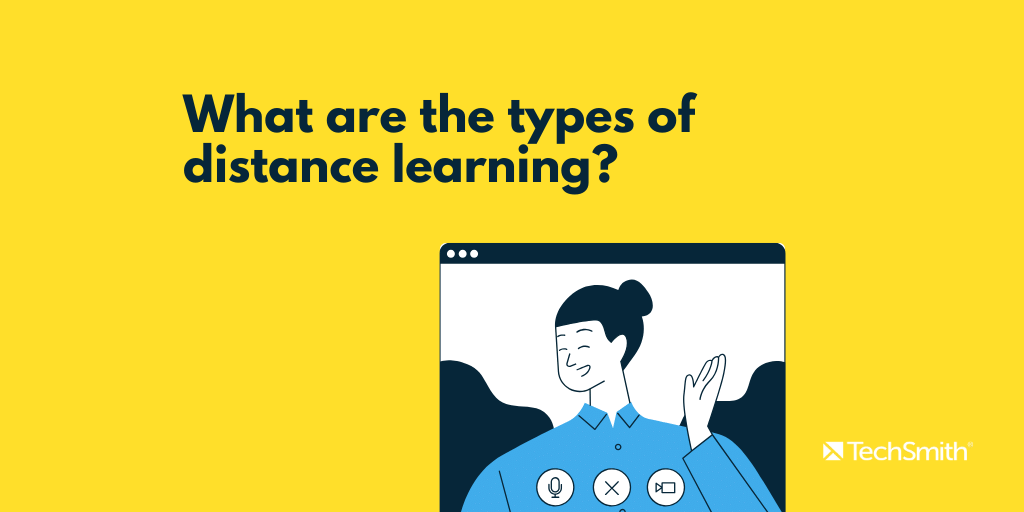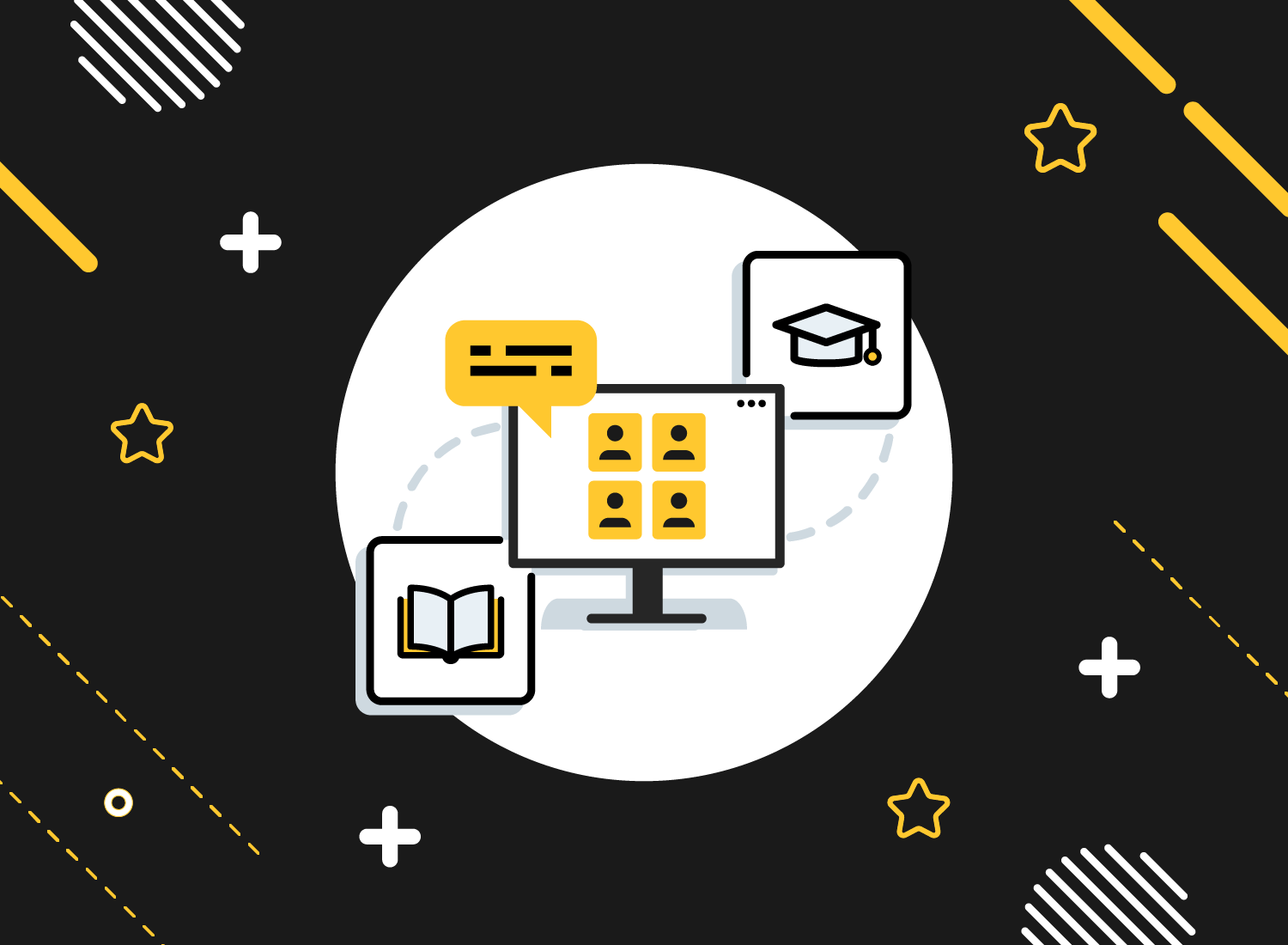Distance learning has become a go-to method of education, opening up countless new opportunities and access to education that many didn’t think possible before the forced shift brought on by the changes COVID-19 thrust onto the world.
“Multiple studies suggest that most students are already confident that technology-enabled learning works, but this has probably been a difficult transition for some faculty members. I am hoping that universities and faculty members will embrace the challenge and adapt,” K. Holly Shiflett, Director of North American partnerships, FutureLearn, said in a recent interview.
The shift to online distance learning has been a transformative moment for many educators and students.
Unfortunately, it can be challenging for many educators to find the time to create effective online courses, and the continuous developments in the technology that supports it can make it difficult to keep up.
That’s why we’re here to help! This guide will help universities and faculty members understand and embrace the challenge of distance learning.
What is distance learning?
In the past, high schools and universities offered correspondence courses as a distance learning method. Course materials were often sent to a student by mail and assignments were completed online or returned to the teacher by mail.
More recently, distance learning programs are using the incredible opportunities afforded by modern technology and offer very intimate and effective learning opportunities in all manner of distance education courses. Effective distance learning is now a viable option from kindergarten to elementary school to university.
What’s the simplest way to explain distance learning?
In the simplest form, distance teaching and learning is like going to school no matter where you are in the world.
Students can watch lessons on their computers, join live video calls, and hand in all assignments through an online learning management system, which supports virtual learning tools.
Teachers can create on-demand learning opportunities or teach lectures live as they would in a traditional classroom.
Synchronous vs asynchronous distance learning
There are, of course, some significant differences between distance learning and traditional learning; the most obvious being the absence of a requirement for physical attendance in a specific location.
When participating in distance learning, students experience significantly more freedom in their approach to learning. This can be a positive aspect in that students can choose courses based on their own schedules, the teaching style offered, and the modalities used.
Non-traditional learners can create a learning environment that works well for them rather than having to fit themselves into the traditional educational mold.
On the flip side of that freedom lies the requirement for students to be highly disciplined with their studies. In the case of distance learning in a university context, the implications may be less severe but for elementary distance learning and especially distance learning for kindergarten there is a need for some level of adult supervision to ensure the best chance at success.

So, what are the differences between distance learning and regular learning?
Distance learning falls into two main categories:
- Synchronous learning
- Asynchronous learning
You should understand the difference between synchronous vs asynchronous. Different types of distance learning fall into one or both of these camps.
Synchronous learning
Synchronous means “at the same time.” It refers to a method of education delivery that happens in real-time. It requires live communication online. It uses technology, such as teleconferencing, to achieve this.
Synchronous learning proves less flexible than other forms of distance learning. After all, students must meet with their instructor and sometimes their classmates at pre-scheduled times.
This approach limits the student’s ability to learn at their own pace. It may frustrate some learners who crave the freedom of the asynchronous classroom.
Asynchronous learning
As for asynchronous distance education? Students receive clusters of weekly deadlines. They have the freedom to work at their own speed.
Asynchronous distance learning comes with more opportunities for student interaction.
Students can access course content beyond the scheduled meeting or class time and interact through online conversations, quizzes, or video comments on their own schedule.
Both faculty and students benefit from the flexibility of asynchronous learning as it allows them to create and consume content when it’s convenient for them.
Benefits of asynchronous learning
In today’s world, both professors and students realize that external factors contribute to odd hours and disjointed schedules.
The flexibility of asynchronous learning allows them to create and consume content when it’s convenient for them and learning materials can be accessed at any time, anywhere.
Reach and engagement
With hectic and unpredictable schedules, faculty can extend course content beyond the scheduled meeting and class time through pre-recorded videos and other content.
Faculty can leverage live recordings or create videos, and then get analytics, generate captions, have conversations, add quizzes, and integrate content right into a Learning Management Software (LMS).
Make great educational videos
Create engaging videos that drive student success with Camtasia’s easy drag-and-drop editing.
Free Download
Student motivation
Asynchronous teaching methods help motivate students to review content on their own time and on whatever device they prefer.
Students can go at their own pace and when it’s convenient for them. Self-paced learning accommodates various learning needs and preferences and enhances student success.
Students can then refer back to the content to study for exams, have discussions, and consult the content beyond the confines of a live lecture.
Complement synchronous learning experience
There’s always a need for virtual, live interaction, but asynchronous communication complements that to extend live sessions beyond a singular class.
For example, rather than simply having a Zoom meeting, professors can do a lot more with a recording. They can:
- Post the Zoom recording for rewatching
- Interact around the content
- Get analytics on participation
- Generate captions for accessibility
- Add quizzes
- Integrate with an LMS
A tool like TechSmith Camtasia will save you steps and help create better content for online courses.nd help create better content for online courses.
What are the different types of distance learning?
Next, let’s explore various types of distance learning. These approaches to education can be synchronous or asynchronous. Some fall into both categories.

These types of distance learning include:
- Video conferencing
- Hybrid distance education
- Open schedule online courses
- Fixed-time online courses
Let’s dive into what each of these types of distance learning entails.
Video conferencing
Video conferencing is traditionally a meeting where two or more participants use video to connect over the internet. This is a form of synchronous communication. Using tools like Zoom, Blackboard Collaborate, Adobe Connect, or other conferencing software, teachers and students interact together no matter where they are located.
Video conferencing enhances student-instructor interactions and provides a structure for lesson planning. It remains a vital component of distance learning.
Hybrid distance education
Hybrid distance education combines synchronous and asynchronous methods. Students receive deadlines to complete assignments and exams. Then, they work at their own pace.
They submit assignments through online forums. They maintain contact with their instructor. Yet, they work at their own pace. As students progress, they gain access to new modules.
Who thrives with hybrid distance education? Students that love independence.
Open schedule online courses
Under the asynchronous category, you’ll find open schedule online instruction. Such courses provide students with plenty of freedom. To complete coursework, students receive:
- Online textbook(s)
- Bulletin boards
- And more
Students are given a set of deadlines. Then, the instructor lets them schedule at their own pace. Students who value learning independently excel with this format. It requires significant self-discipline and motivation, though.
Students who lack the right skill set may find this approach daunting. They may feel overwhelmed by the presentation of the material. They may lack the motivation to work through the course in an effective way.
Fixed-time online courses
What’s the most common format for distance learning? Fixed-time online courses.
How do they work? Students log in to the learning site at designated times. They must complete pre-scheduled classroom activities at a specific pace.
These activities often include chats and discussion forums. Fixed-time online courses encourage student interaction. But there’s little room for self-pacing.
Who uses distance learning?
Distance learning programs are used by a wide variety of people for many reasons. The two groups making up the largest segment of the distance learning population are students (from elementary school all the way through to university) and professionals.
Teachers and students
Distance learning courses are offered for students of all ages. High school students can take additional courses to speed up graduation, students in University or College can attend a school anywhere in the world without the relocation expense, and working professionals can enhance their skills by accessing distance learning programs.
Distance learning can make education more accessible for learners in rural areas or those who experience challenges with traditional education.
Make great educational videos
Create engaging videos that drive student success with Camtasia’s easy drag-and-drop editing.
Free Download
Companies
Distance learning activities have been put to good use in the training and onboarding for many companies. For those that are spread out globally or who have remote workers, distance learning creates an opportunity for consistency in employee experience across the board. Full training regimens can be provided using distance learning programs.
What are the advantages of distance learning?
Of course, traditional, face-to-face learning is wonderful in many ways, but there are also a lot of advantages to distance learning.
Flexibility
One of the strongest advantages of distance education is the flexibility it offers.
Students can choose from structured distance learning opportunities with live teaching and real-time access to the teacher, or unstructured distance learning courses that can easily be adapted around a busy schedule.
Distance learning programs can be completed from anywhere in the world. There are formats to fit many different learning styles. Most students will find an option for distance education that matches their needs.
Easy Access
Distance education has created a new opportunity for students who may have had difficulty accessing education in its traditional format. Whether this was due to remote location, or disability, distance learning removes the barriers associated with attending in-person classes.
Ease of access to global learning opportunities has opened up as well, with distance learning in universities and colleges making international study an option for many more students.
It’s also created the opportunity for lifelong learners from all over the world to access courses and curricula presented by teachers they would not have had access to otherwise.
Money and time savings
Distance learning has rendered education much less financially draining and much more time-effective.
Accessing distance education programs for universities and colleges cuts tuition by 50% as compared to a traditional on-campus experience.
Because so many of the costs related to infrastructure and logistics are removed with distance education, the costs to access it are significantly lower than comparable traditional education models.
Additionally, there are savings related to time spent as well. Of course, travel time is relevant for students, but on the teachers’ side, the ability to record and repurpose lessons results in an impressive amount of time saved as well.
Adaptability and freedom
Unlike the traditional education model, distance learning is easily adapted to the lifestyle and learning needs of the student.
Lesson schedules, teaching methods and the learning environment are all adaptable to each individual student through distance learning courses in a way that is impossible within in-person education.
Students from kindergarten to elementary school to university can use the time, space, and pace-related freedoms of distance learning to find levels of success they may not have in a traditional structure.
Earning while learning
Working professionals of all ages can use distance learning to earn a higher degree of education, or an entirely new skillset while maintaining their day-to-day working lives.
Many Distance learning universities and colleges offer asynchronous programs, allowing degrees and certifications to be earned outside of an individual’s working time.
Subject Matter experts from across all topics offer self-paced distance learning courses that can enhance an individual’s knowledge and credentials without interrupting their ability to earn an income.
What are the disadvantages of distance learning?
The benefits of distance learning are clear, but there are some warnings when it comes to this learning approach, too. Let’s consider some of the disadvantages.
Lack of social interaction
The amount of social interaction offered in distance learning activities is far less than in the traditional education model.
Without the requirement to attend a brick-and-mortar location, students miss out on the ability to work directly with peers. This characteristic of distance learning can affect children most notably, particularly for children performing distance learning activities in elementary school when peer interaction is such a cornerstone.
One way that this potential disadvantage can be limited is in the use of video as a communication tool, particularly regarding the provision of feedback.
Receiving feedback (think a graded test, a written comment, a marked up essay, etc) as part of distance learning often happens without the familiar social cues that help one understand the context and can feel somewhat abrasive. It can leave a student’s mind swimming in questions and uncertainty – particularly when the feedback is not entirely positive.
However, when video is used to provide feedback, these social cues are present. Being able to hear the teacher’s tone and see their facial expressions can make a world of difference and can reintegrate some of the social interaction that may be lacking in a distance learning experience.
High chances of distraction
Distraction can be a challenge for students engaged in distance learning programs. This can show up in many ways.
For one, students face a higher risk of online distraction. Without face-to-face meetings, students can lose track of deadlines and motivation.
Students who work well on their own may easily surmount these obstacles. Students who have trouble prioritizing may stumble. So will those who lack organizational and scheduling skills.
Self-motivation and focus are essential skills for success in distance learning activities.
Complicated technology
Overdependence on technology is a challenge with distance learning.
Students must have reliable access to tools like a computer, webcam, and a stable internet connection.
Any malfunction of hardware or software on either the student’s or teacher’s end can result in learning coming to a complete standstill.
To be successful, students or their caregivers must have a moderate level of comfort with technology. This is a requirement for modern distance learning at any level.
Questionable credibility of online degrees
Many employers will not accept a degree or certification from a distance learning program. This is a result of a lingering stigma around distance learning.
Not all teachers are skilled or comfortable with teaching in an online environment. This contributes to inconsistency with course materials and areas of focus.
A perceived lack of proper assessment is another factor contributing to this challenge with the credibility of credentials gained through distance learning programs.
Hidden student costs
While the reduced overhead costs to institutions often result in a lower cost of learning for students engaged in distance learning, there are some hidden costs associated with this type of learning.
These expenses include:
- Gaining access to a reliable computer
- Having an internet connection
- Buying a web camera (in some instances)
- Computer maintenance
- Utilities (e.g., electricity for internet services)
Not all students have access to these resources. Distance learning can put them at a distinct disadvantage.
Are distance learning degrees recognized?
In recent years, distance learning has gained in popularity. In the fall of 2017, 3.1 million higher education students enrolled in online programs. And there is a rising proportion of students studying fully online who are enrolled within 50 miles of their home.
Distance learning has gained widespread credibility and acceptance, too. Top online universities are comparable to their on-campus counterparts.
Nonetheless, students should still keep an eye out for scammers. Before closing a distance learning program, they should explore the institution’s accreditation.
What does accreditation look like? While it may vary, accreditation occurs at three levels:
- Programmatic accreditation
- Regional accreditation
- National accreditation
Programmatic accreditation attests to the validity of certain programs of study.
Regional accreditation means regional agencies have endorsed specific fields of study.
National accreditation means the program meets federal accreditation requirements.
Does distance learning have value?
Absolutely. While distance learning was once considered an inferior substitute for traditional education, it is now considered by many to be outperforming traditional classroom instruction.
This is largely because of video technology. Video helps make distance learning feel personable and helps keep students engaged.
Not only are students more successful, but they prefer remote learning.
77% of academic leaders rate online education as equal or superior. And 69% of chief academic officers agree.
Distance learning is a vital part of long-term education strategies.
Make great educational videos
Create engaging videos that drive student success with Camtasia’s easy drag-and-drop editing.
Free Download
What makes a good distance learning program?
Not all distance learning courses are created equal. There are some key factors to consider when searching for high-quality distance learning courses. Let’s look at what those are.
Proper pacing
The best distance learning courses are those that are well-paced.
Students should not find themselves bored or overwhelmed by the lessons, projects, or course material.
The distance learning activities should include large projects for which students have ample time to prepare, with smaller meaningful assignments peppered amongst them to retain engagement and interest.
Multimedia integration
Excellence in distance learning courses can be tied to the effective use of multimedia learning aids.
Integrating podcasts, videos, and interactive activities can be very engaging for students and serve multiple learning styles.
When purposefully used, distance learning activities that incorporate multimedia tools can assist with the retention of course material. In fact, research shows that two-thirds (67%) of people understand information better when communicated visually.
Quality content
Low-quality content, like endless textbook reading assignments, monotonous lectures, and stock assessments lacking creativity, results in low retention of distance learning course material.
Distance learning activities that center on high-quality content, like engaging videos, passionate lectures, and interactive websites help students to maintain interest, retain information, and find more success.
Self-directed learning
Distance learning courses that offer students the ability to make their own discoveries, complete projects in the way that works best for them, and focus on the areas of study that they find most interesting are the courses that lead to the highest success.
Community connection
Great distance learning programs recognize that students are often negatively affected by the lack of social interaction within this style of education and intentionally incorporate the community into their curriculum.
Effective courses include group projects where students have to work together and opportunities for classmates to connect using digital tools.
Multiple learning modalities
The best distance learning opportunities integrate a range of learning modalities to allow students to learn in the way that works best for them. Some students retain and engage with information best visually, while others need to hear information spoken out loud.
Modalities included in the best distance learning courses will include visual, auditory, and kinesthetic, among others.
Intuitive navigation
For students to see success, distance learning programs should be intuitive to navigate. Ideally, this will be vetted by a third party.
Students should be presented with well-laid-out course content that lets them easily see what to do and when. Access to required resources and information should never be a challenge within a well-formatted distance learning course.
Reliable technology
The most effective distance learning programs use technology that is as universally applicable as possible. Students should not have to download and learn new or unreliable apps, plugins, or extensions to access or engage with course material.
Flashy additions of technology, while potentially interesting, can negatively impact the student experience in distance learning courses.
Room for additional exploration
Striking a balance between providing students with opportunities to dive into additional resources and overwhelming them with too many exploratory opportunities is an important balance for distance learning programs to strike.
Clearly distinguishing required course material from optional enhancement activities is crucial to providing a compelling distance learning experience.
What is the future of distance learning?
While distance learning has been in use for centuries, it has had an intense increase in its adoption since 2020.
It has been clearly illustrated that physical presence in a classroom is no longer the only option for effective learning.
Distance learning for students from elementary school to universities and colleges has come a long way, with no signs of its growth slowing down.
With the rise of remote and hybrid work, workplaces have continued to adopt distance learning practices as well.
Learning Management Systems and easily incorporated tools for creating educational content like Camtasia have made it easier than ever to provide quality education in the workplace, regardless of distance. The great news is that this tool offers a free trial so you can start creating amazing learning resources right now!
Make great educational videos
Create engaging videos that drive student success with Camtasia’s easy drag-and-drop editing.
Free Download
While distance learning is unlikely to replace in-person instruction fully it’s certainly an effective tool that will continue to be developed and integrated into an increasing number of scenarios.



Share